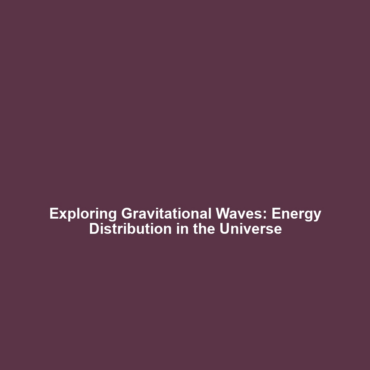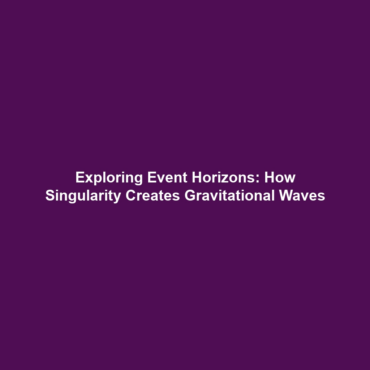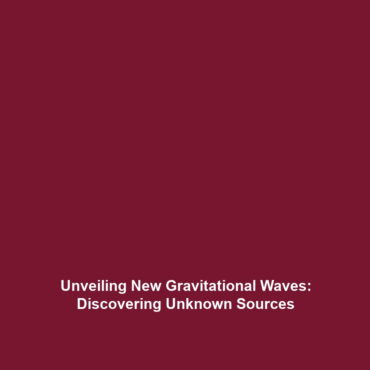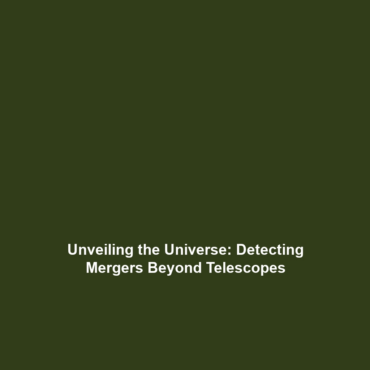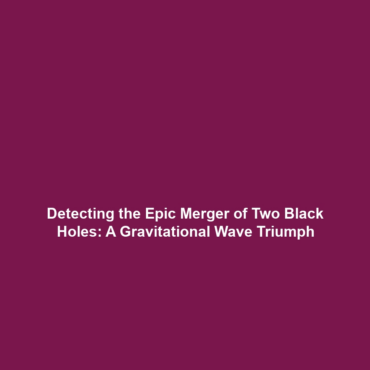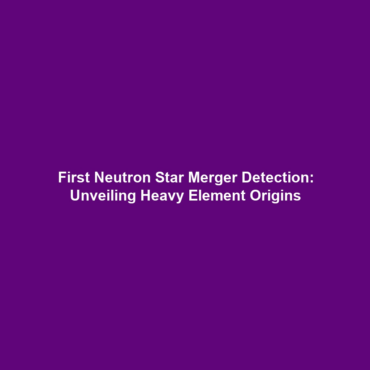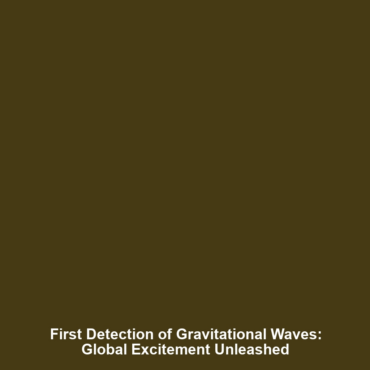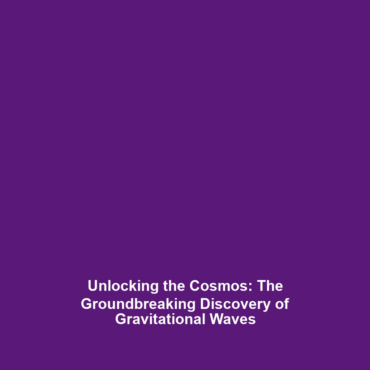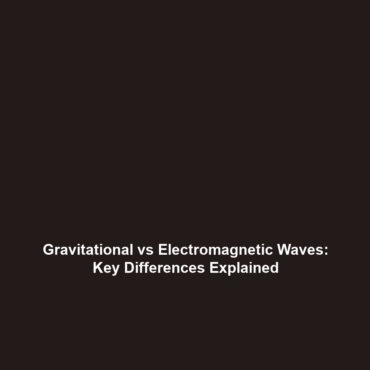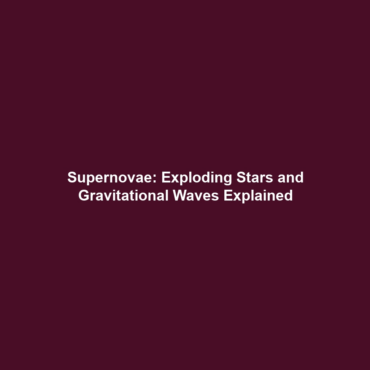The Role of Gravitational Waves in Energy Distribution Across the Universe
Gravitational waves are ripples in spacetime caused by some of the universe’s most violent events, such as merging black holes and neutron stars. As researchers delve deeper into these phenomena, their role in energy distribution across the cosmos becomes increasingly significant. Understanding how gravitational waves contribute to the energy landscape of the universe not only enriches our knowledge of astrophysics but also enhances our understanding of fundamental physics and cosmology. This article explores how gravitational waves affect energy distribution and what this means for our understanding of the universe.
Key Concepts
Understanding Gravitational Waves
Gravitational waves arise from the acceleration of massive objects. These waves travel at the speed of light, carrying energy away from their source. The detection of gravitational waves has opened a new window for astrophysical observations and provided insight into the energy dynamics of cosmic events.
Energy Distribution in the Universe
The universe is a complex system where energy distribution plays a crucial role. Gravitational waves contribute to this distribution by transferring energy across vast distances. The energy carried by gravitational waves is vital for understanding the processes that govern galaxy formation and evolution.
Applications and Real-World Uses
The role of gravitational waves in energy distribution has several important implications in the field of astrophysics:
- Cosmological Measurements: Gravitational waves serve as a tool for measuring distances in the universe, thereby aiding cosmologists in their efforts to understand dark energy and its influence on cosmic expansion.
- Astrophysical Phenomena: By studying the energy released during events like neutron star mergers, researchers can gain insight into the formation of heavy elements and their distribution in the universe.
Current Challenges
Despite significant advancements, researching the role of gravitational waves in energy distribution faces several challenges:
- High sensitivity equipment is required to detect faint gravitational signals, which limits observational capabilities.
- The complex nature of gravitational waves makes data interpretation difficult, leading to uncertainties in energy calculations.
- Current models of gravitational waves need refinement to accurately represent the phenomena contributing to energy distribution.
Future Research and Innovations
As scientists continue to explore the universe, several exciting innovations related to the role of gravitational waves in energy distribution are on the horizon:
- Upcoming gravitational wave detectors, such as the Einstein Telescope and LIGO’s upgrades, promise to improve sensitivity and detection capabilities.
- With advances in data analysis techniques, researchers will be able to extract more information about the energy dynamics of cosmic events.
- Future studies may lead to new theoretical models that better explain the role of gravitational waves in cosmic energy distribution.
Conclusion
In summary, gravitational waves play a pivotal role in energy distribution across the universe, providing valuable insights into the connections between cosmic events and energy dynamics. Continued research in this field is crucial for a deeper understanding of both astrophysics and fundamental physics. For more information on gravitational waves and their impact on our understanding of the cosmos, consider exploring our articles on gravitational wave detection and cosmology’s relationship with gravitational waves.
